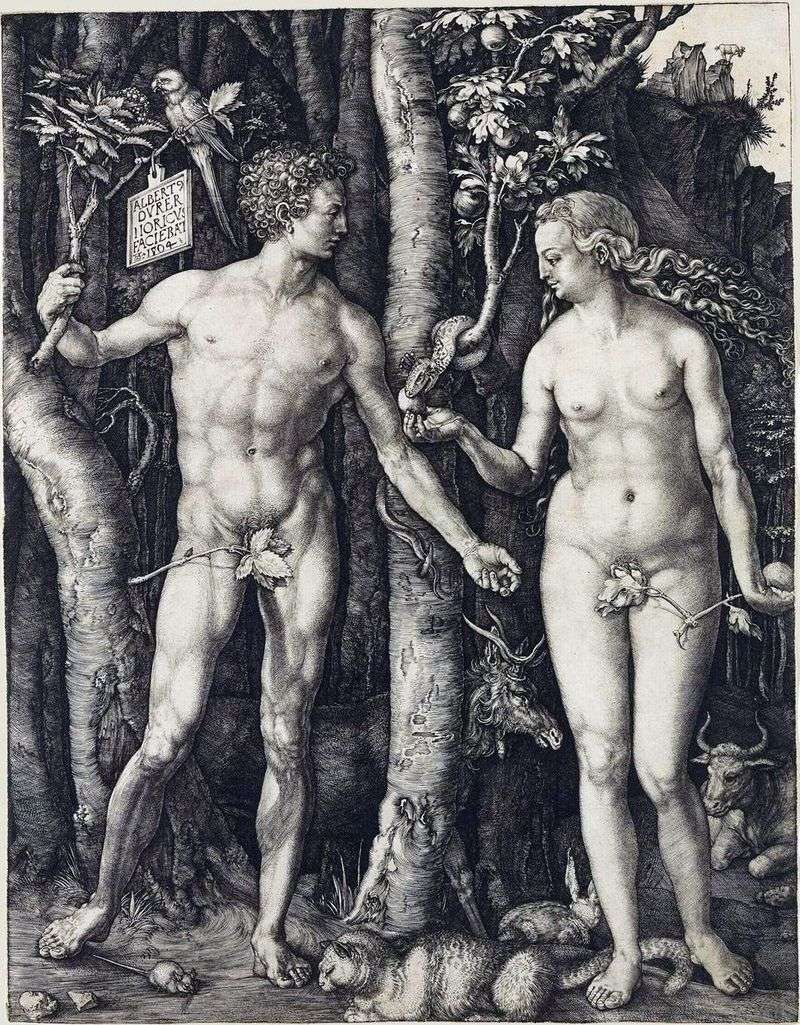
Having visited Italy, the artist moved to his native Germany the achievements of the Italian Renaissance: never before had a naked body been depicted with such impeccable observance of proportions. However, on the engraving Adam and Eve look as if made “from one test”: the muscular powerful Eva seems only a slightly softened copy of Adam. Immediately after the second Italian journey, the artist, who was strongly impressed by the art of antiquity, created two pairs of paintings – “Adam” and “Eve.” In German Renaissance painting, this was the first image of a fully naked human figure in full size.
Durer wrote that since the ancestors were created in the image and likeness of God, their bodies should be a model of perfect beauty. And indeed – his Adam and Eve are captivatingly beautiful, but they are beautiful in different ways: the young masculinity of Adam emphasizes the soft femininity of his girlfriend. It seems that Eva’s tender body blossoms in anticipation of a happy earthly love. The painting was originally intended for a custom altar, it has all the indispensable attributes of the fall scene – a tree, apples, snakes, but for unknown reasons the altar was not written, and it is hardly an accident.
Could such a picture fulfill the traditional role, reminding the pious parishioner of the church of the sinfulness of the human race? Too young sinners are too charming not to cause sympathy, their sin is too sweet to repent of. This work of Durer for several decades inspired his followers. On the engraving of Hans Baldung Green “Fall” 1517 Adam, barely having tasted the apple, resolutely embraces Eve, and in the picture of the same author of 1525 Eve looks shamefacedly chaste.
Lucas Cranach the Elder Eve is coquettish and seductive… New times were approaching, secular art was affirmed alongside the church art, and the visionary artists of the Renaissance learned to see in the images of Adam and Eve not only the first people and the first sinners, but above all just people with all their sins and virtues.
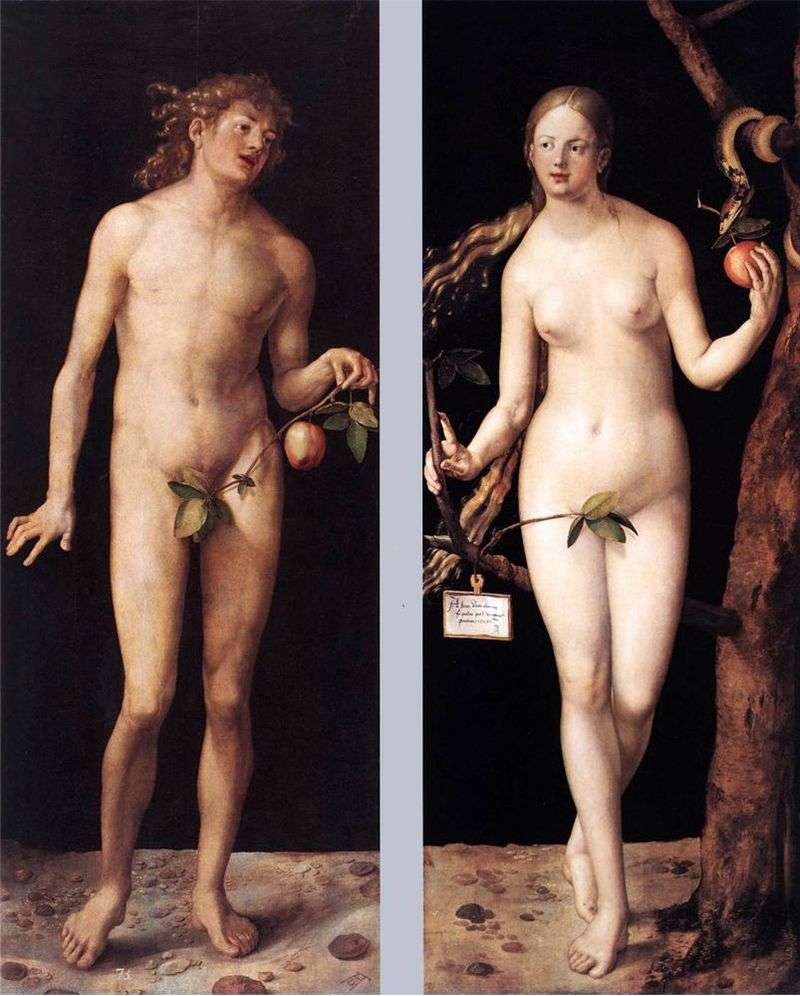 Adam and Eve by Albrecht Durer
Adam and Eve by Albrecht Durer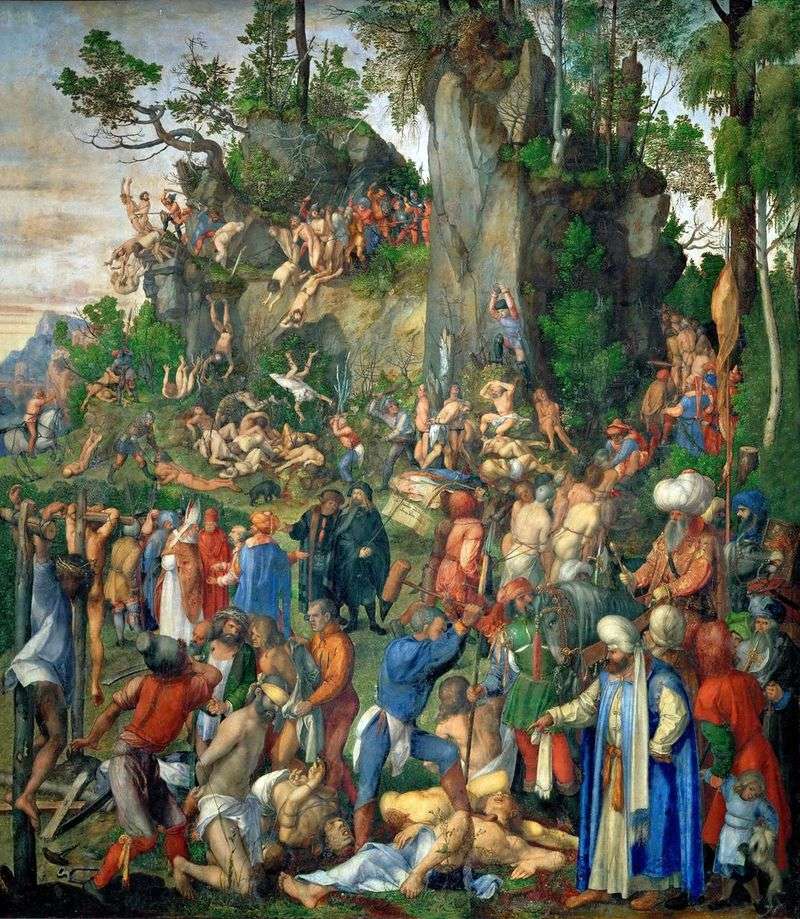 The death of ten thousand Christians by Albrecht Durer
The death of ten thousand Christians by Albrecht Durer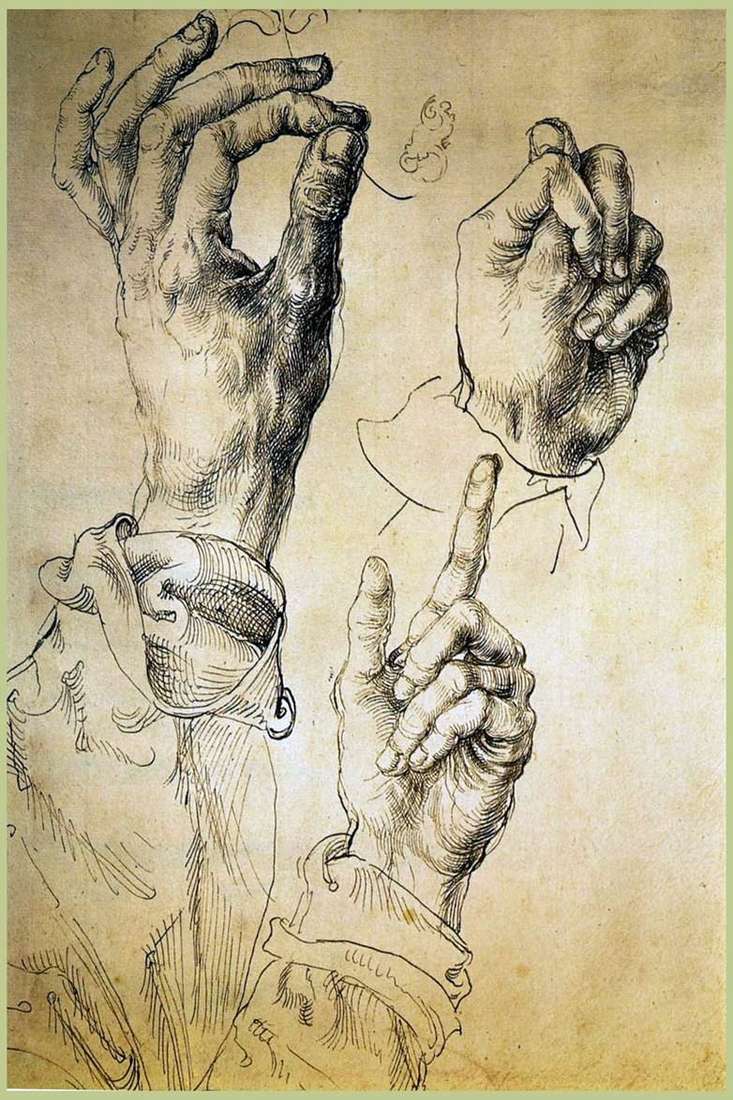 Etude “Three Hands” by Albrecht Durer
Etude “Three Hands” by Albrecht Durer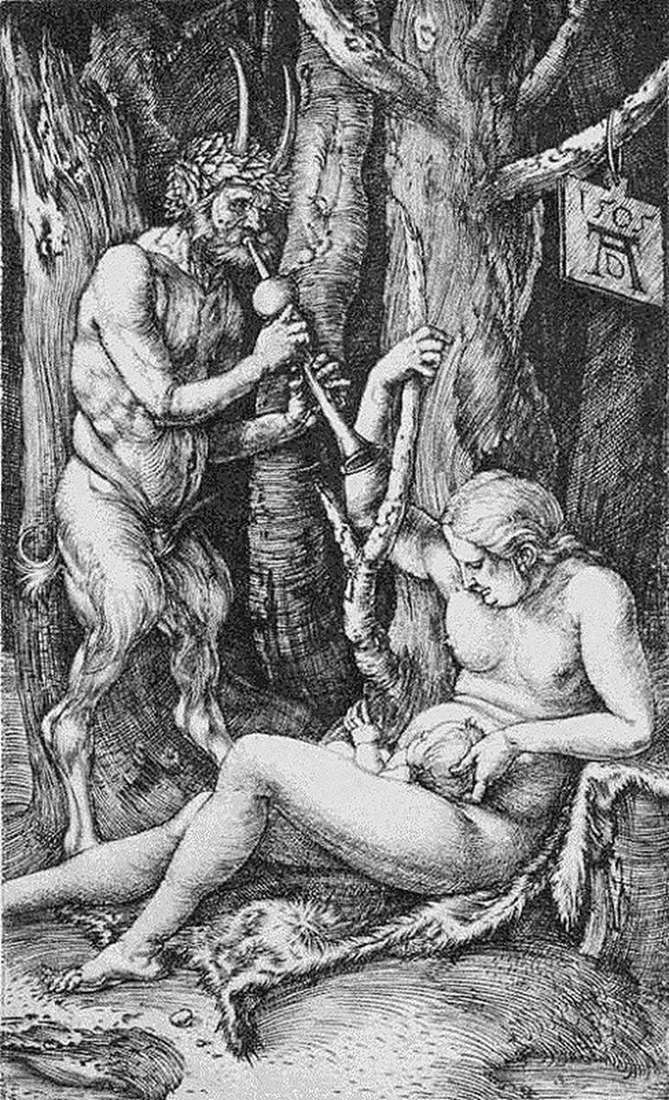 Family of satire. Engraving by Albrecht Durer
Family of satire. Engraving by Albrecht Durer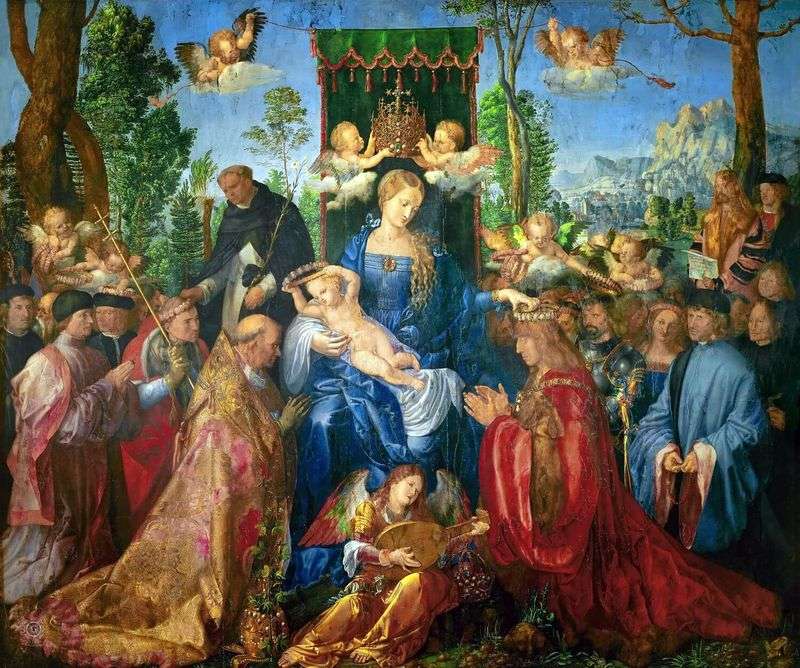 Altar Feast of the beads by Albrecht Durer
Altar Feast of the beads by Albrecht Durer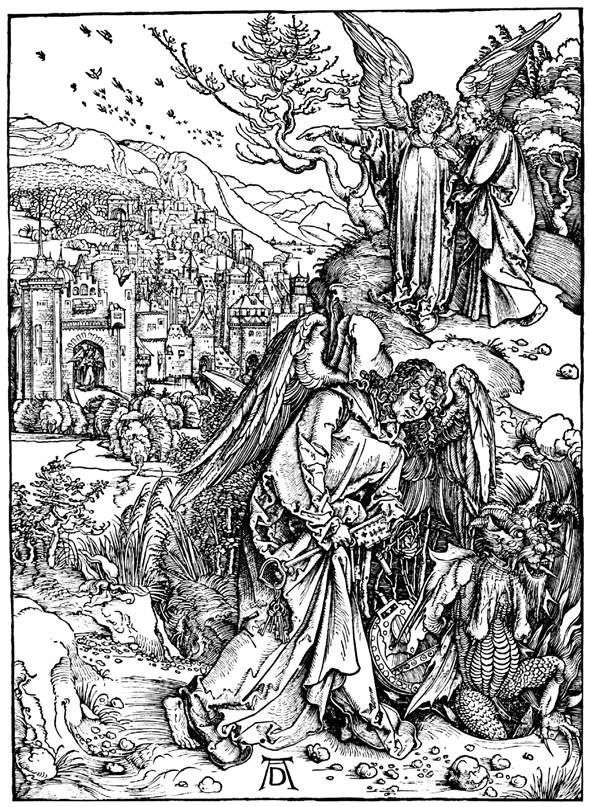 An angel with a key from Hell. Engraving by Albrecht Durer
An angel with a key from Hell. Engraving by Albrecht Durer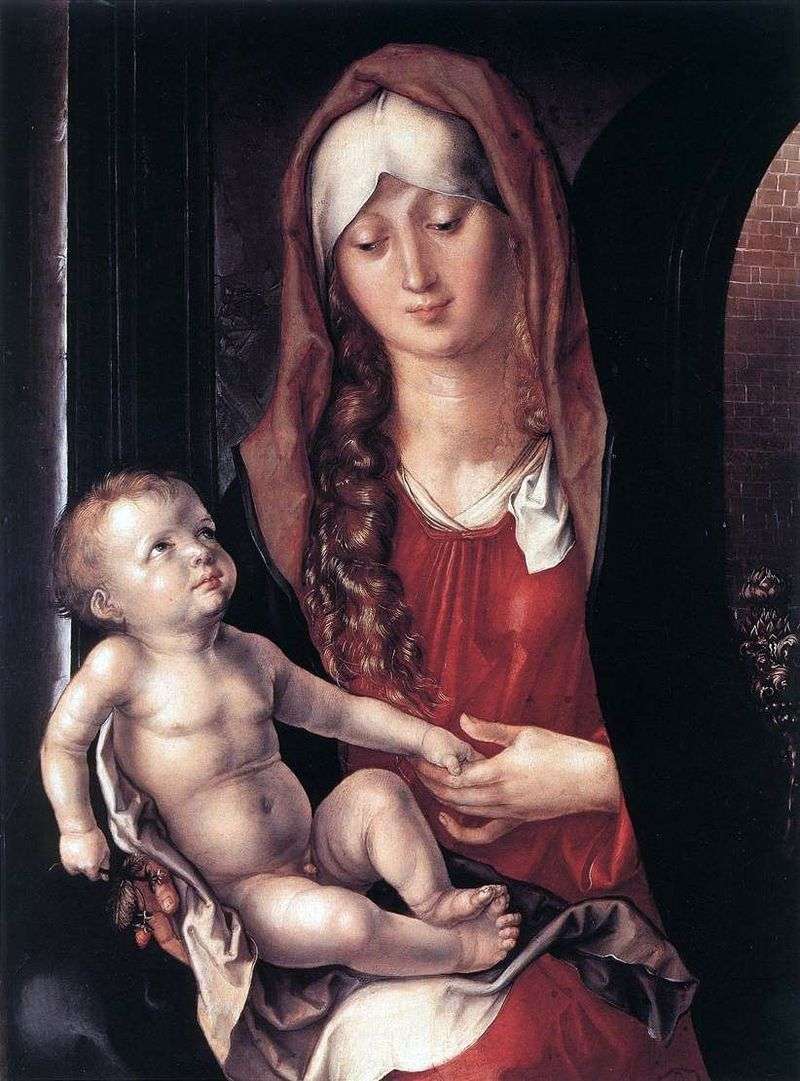 Madonna and Child by Albrecht Durer
Madonna and Child by Albrecht Durer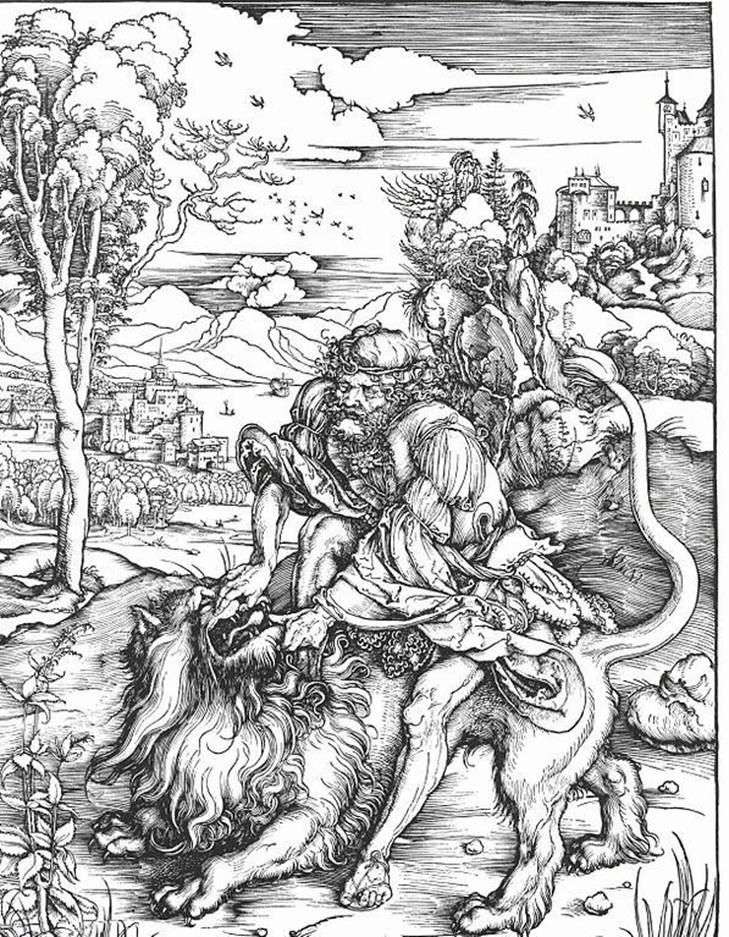 Samson killing the lion by Albrecht Durer
Samson killing the lion by Albrecht Durer